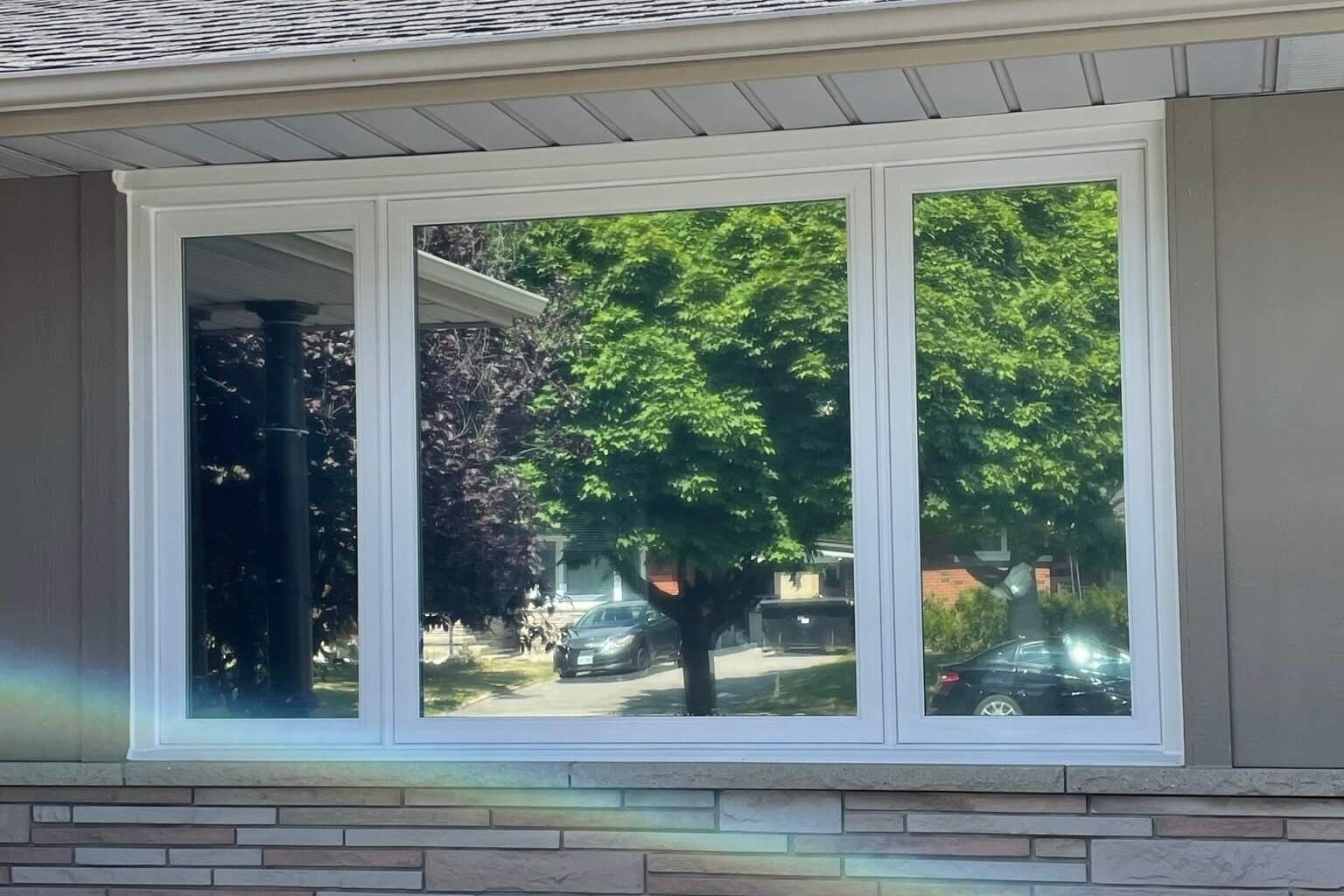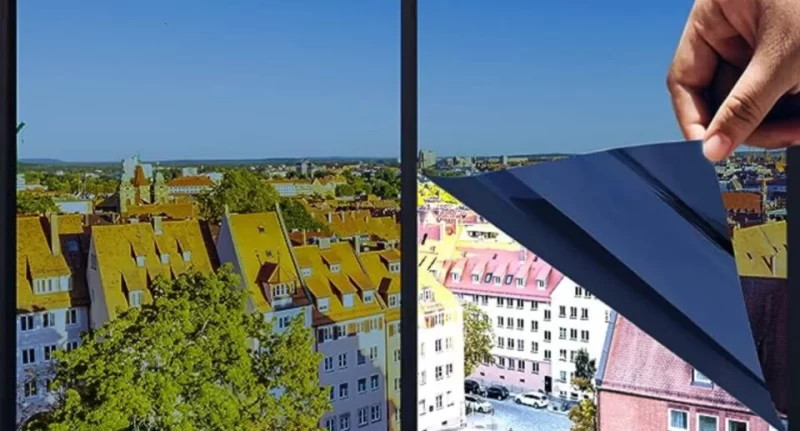How to Check Window Tint Percentage at Home: Full Guide

Do you wonder if the window tint in your home is too dark or if it gives you enough protection from the sun’s glare and heat? Or how to check the window tint percentage at home without professional help? It’s really easy and can help you make sure it keeps you comfortable.
If you want a cooler home or less glare, knowing your tint percentage can help. This guide will show you easy ways to check your window tint at home using simple tools and comparison methods. Let’s start.

What is the window tint percentage?
Window tint percentage tells you how much light can pass through the windows in your home. A higher percentage means more light can pass through, and a lower percentage means less light and a darker tint. Here’s what different percentages mean:
- 5%: very dark. Only 5% of light gets through.
- 20%: dark, provides 20% of light in.
- 35%: medium-dark, allows 35% of light through.
- 50%: lighter, with 50% of light coming through.
- 70%: very light, almost clear, provides 70% of light in.
These percentages show how much heat, glare, and UV protection they provide. The right tint percentage depends on your needs, like keeping your home cooler or cutting down on glare. This information helps you decide how dark your windows should be.
How to test window tint percentage at home
You can test your window tint percentage at home using simple methods. One way is to use a tint meter, which shows how much light passes through your windows. If you don’t have a meter, use reference photos to compare your tinted windows and get an idea of the percentage. These methods help you make sure it gives you the right protection.
How do tint meters work?
A tint meter is a tool that shows how much light can pass through a tinted window. It has a light sensor and a screen that displays the percentage of light coming through the window. To use it, place the meter on each side of the window, and it tells you how much light is getting through. This number is your tint percentage. Using a tint meter is a fast and easy way to check if your tint is dark enough to block heat and glare. It’s a common method used by commercial window tinting.
Types of window tint meters
You can use a few different types of window tint meters at home. Each works differently but gives you the same kind of readings. Here are the main types:
- Handheld meters. Common and easy to use. Place the meter on both sides of the window, and it will show the percentage of light that gets through.
- Slide meters. Slide the window between the two parts of the meter to get a reading. They are simple and reliable.
- Fixed meters. These stick to one side of the window. Professionals often use them, but you can also find them for home use.
Each type of meter helps you find out if your tint is working well, providing the right amount of protection from heat and glare.
Compare to reference photos
If you don’t have a special meter, you can compare your window tint percentage at home to reference photos. This is a simple way to figure out how dark your tint is without any special tools. Here’s how you can do it:
- Find reference photos. Look online for photos of windows with known tint percentages. Make sure the photos were taken in lighting similar to what you have at home. Look for images showing tints like 5%, 20%, 35%, etc.
- Take a photo of your window. Use your phone to take a picture of your tinted window during the day when there’s plenty of light. Try to take the photo at a similar angle and light as the reference photos you found.
- Compare the photos. Place your photo next to the reference photos. Look at how much light comes through and find which reference photo looks most like yours. This can give you a rough idea of your tint percentage.
- Double-check. Try this method in different conditions to be sure. Sometimes, changing the light or angle can help you get a more accurate match.
This method with photos helps you figure out your window tint percentage and make sure you have the right protection from heat and glare. This way, you can decide if your tint is too dark or just right, even without a meter.
Factors that affect results
When you check your window tint percentage, several things can change the results. Here are a few important factors to consider:
- Lighting conditions. Bright sunlight or dim light can make the tint look different. Try to check it in the same kind of light each time.
- Window cleanliness. Dirt or smudges on the windows can make the tint look darker than it is. Clean your windows before you test.
- Tint film quality. Different kinds of film can give different transmissions, so it’s good to know what type you have.
- Measurement tools. If you’re using a tint meter, make sure it works right for accurate readings.
- The angle of view. Looking at the window from an angle can change how dark the tint seems. Look straight through the window for the best reading.
These factors can help you get a better tint percentage and make sure it protects you from heat and glare.
Why check the window tint percentage?
Checking your window tint percentage is important for several reasons:
- Protection. Make sure your windows provide the right amount of protection from UV rays and heat.
- Comfort. Keeps your home cooler and reduces glare, making it more comfortable.
- Energy savings. The right tint can lower your cooling costs by blocking out more heat.
But it’s not all you need to know, so read on.
Choosing the right tint percentage
Picking the right tint percentage for your home’s windows depends on a few important things:
- Climate. If you live in a sunny place, a darker tint can help block more heat and glare. In cooler areas, a lighter one that lets in more light might be better.
- Privacy. A darker tint gives you more privacy, so people can’t see inside your home as easily. You can even choose privacy window film—it is a special covering for windows that makes it hard for people outside to see in. These films can look different, like frosted, mirrored, or solid, and can also help reduce glare and UV rays.
- Visibility. You need to see clearly out of your windows, especially at night. A tint that’s too dark can have bad transmission.
- Style. Some people pick a certain tint percentage because they like how it looks on their home.
Think about these factors to pick the tint percentage that fits your needs for protection, privacy, and style.
Conclusion
Now, you know how to check the window tint percentage at home to make sure it gives you the comfort and protection you want. Use a tint meter or compare your windows to reference photos to see how much light they let through. For accurate results, consider lighting conditions, window cleanliness, and the type of tint film.
The right tint percentage helps keep your home cooler, cuts down on glare, and gives you more privacy. With the right tools, you can make sure your windows give you the best protection and style.

Request Quote
Illuminate Your Space: Window Tinting Excellence Awaits. Request a Quote for Customized Solutions, Blending Style, Comfort, and Energy Efficiency. Transform Your Windows Today!